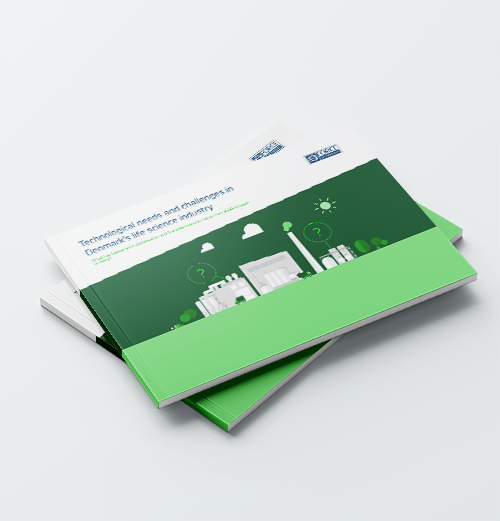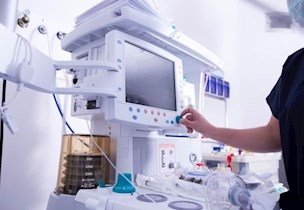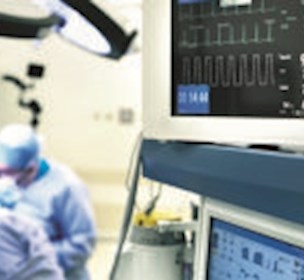From single test to dedicated partnership with WS Audiology
WSA has worked with us to ensure that their products live up to relevant standards and are supported by the correct paperwork and processes to retain existing markets and enter new ones.
85% of people worldwide with hearing trouble have no solution
WSA helps millions of people regain and benefit from the miracle of hearing. The world's third largest hearing aid and accessories manufacturer, WSA employs 12,000 people.
Our hearing aid industry reaches less than 15% of the 466 million people affected by hearing loss, and the number is growing. Cost is one of the most significant barriers to obtaining a hearing aid.Maarten Barmentlo / Chief Marketing Officer, WSA
"You might think of hearing loss as an individual challenge, but it is a global crisis that impacts all aspects of society. Hearing enhances the quality of life and economic opportunity. There is nothing more rewarding than giving someone back the miracle of hearing and helping them thrive. This drives everything we do," WSA Chief Marketing Officer Maarten Barmentlo says.

From a single EMC test to a dedicated compliance partnership over time
"Our industry is notoriously rigorous and challenging in its legal requirements. We always go out of our way to ensure that we comply with relevant and upcoming medical regulations. Our testing, documentation and product compliance collaboration with FORCE Technology goes back to 1993, when we began using them to perform acoustical tests according to Nordic requirements followed by Electro Magnetic Compatibility (EMC) tests in 1995. The ability to co-exist with other electronic equipment is key to product approval in any country worldwide. FORCE Technology's EMC test reports are internationally recognised and can be used everywhere to ensure global market access," EMC expert for the WSA hearing aid brand Signia Dieter Kattenbeck says.

New medical device regulations require updated product tests and documentation
In 2017, the European rules regarding the marketing of medical products were updated, finally going into effect in May 2022. This is when the Medical Device Regulation (MDR) replaced the Medical Device Directive (MDD) due to the authorities' need to be better able to identify and monitor medical devices entering the market and their safety once in it.
Where a directive provides guidelines, regulations are more exhaustive in their demands. Any company providing medical products must prove their ability to comply with the MDR by 2027 to continue to market products on the European market. Any medical products with MDD approval but lacking MDR approval can no longer be legitimately sold after 2027.
MDR brings with it a need to have all tests updated to be on par with the latest standards. For hearing aid manufacturers, it calls for more comprehensive EMC safety testing, to name but a few of the new requirements.
"We contacted FORCE Technology to help guide us on what we needed to do to prove product compliance with the latest versions of standards connected to MDR," Dieter says and continues: "FORCE Technology has shown to be a reliable partner in domains like EMC, electrical safety, product reliability, and acoustics over many years and are always flexible at short notice."
We believe that over-the-counter hearing aids could help many people by being more accessible and affordableMaarten Barmentlo / Chief Marketing Officer, WSA
Over-the-counter (OTC) hearing aids can help low-income people with mild to moderate hearing loss
"While working together on updating our general compliance documentation, we also sought FORCE Technology's standard and test counselling in our joint efforts with Sony to enter the US market with OTC hearing aids for people with mild to moderate hearing loss. Five years in the making, the OTC hearing aid rules make it possible for consumers to purchase hearing aids directly from shops or online retailers without needing a medical exam, prescription, or fitting by a licensed hearing care provider.
"Our hearing aid industry reaches less than 15% of the 466 million people affected by hearing loss, and the number is growing. Cost is one of the most significant barriers to obtaining a hearing aid. In the US, low-income patients with no access to insurance are particularly underserved. Most people don't realise they have a problem until their hearing loss has progressed beyond the mild-to-moderate category, meaning they often wait until they need more powerful, individualised and expensive hearing aids. We believe that OTC hearing aids could help many people by being more accessible and affordable," Maarten says.
US approval of OTC devices no easy feat – but WSA and Sony made it
By making hearing aids available over the counter and pairing them with an app that helps users adapt them to their needs and hearing profile, the price goes down, and a new audience gains access to a medical device that aids hearing loss.
But as soon as you modify a product to suit a new use case – in this case, OTCs are self-fitting, as opposed to standard hearing aids being fitted by certified audiologists - the OTC devices become a new product. And a new product requires further testing, certification and approval to achieve the status of a medical device and the ability to enter the US market legally.
"You cannot get the next hearing aid in a series, or indeed any medical device approved on the basis that it resembles a previous one. If the use case changes, medical regulation authorities see it as a new product that requires new proof of safety and performance. The final OTC rules make up a 200-page document that took five years to write. FORCE Technology helped us develop test programmes and document everything we needed to achieve American Food and Drug Administration (FDA) approval for the WSA/Sony OTC devices. It succeeded, and together we recently launched our first self-fitting hearing aids on the US market," Dieter says.
Hearing aid companies like ours need accredited labs like FORCE Technology to show that our products and processes comply with international standards, get our test reports accepted by national authorities, comply with the requirements of our Notified Bodies and support the claim that the quality of our hearing aids is a major concern.Dieter Kattenbeck / EMC expert, WSA
No shortcuts to compliance – but a strong collaboration makes it faster and easier
"FORCE Technology doesn't take any shortcuts when it comes to consistently delivering the most thorough and complete test programmes, reports and CB Scheme Certificates. The latter is hugely beneficial in the approval process, as a one-pager is easier for authorities to accept than a 160-page test report. And FORCE Technology are easy to work with, too: where our first projects took months, we are now down to weeks or even days. When you have worked together for as long as we have, FORCE Technology knows how we operate and can always counsel us on relevant current and upcoming compliance requirements anywhere in the world. They are not advisers – they cannot tell us how to meet the requirements, but they can counsel us on what we need to consider to retain our ability to legally operate as a hearing aid manufacturer," Dieter says.
He continues: "Hearing aid companies like ours need accredited labs like FORCE Technology to show that our products and processes comply with international standards, get our test reports accepted by national authorities, comply with the requirements of our Notified Bodies and support the claim that the quality of our hearing aids is a major concern."
Get in touch to learn more about how we can assist you as a hearing aid company in complying with medical device standards and gain global market access.

What are the life science industry’s biggest technological challenges?
New report maps the technological challenges with digitalization and green transformation in life science companies.Related content

Material testing validates Exo360's fracture care
/Case

Market access for safe medical devices
/Page




